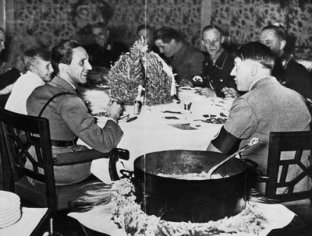
A student of mine sends along a link to Cass Sustein’s thoughts on a recent paper that shows a link between high participation within the Nazi Party and strong civic associations in 1920s and early 1930s Germany. I’ve downloaded the article itself and hope to get the chance to read it, but I thought it worth offering a few quick thoughts on Sustein’s presentation of this argument, especially since I see that a number of people have talked about it. First, its worth noting that although historians obviously continue to debate the rise of the Nazis, many have noted the link between political and civic organizations and the rise of the Nazi Party. Second, the examples Sustein provides simply show that people talk to one another about their beliefs and sometimes change their minds. And yes, that may even occur among extremists.
Third, and most importantly, Sustein simply emphasizes the coexistence of associations and high Nazi Party membership without underscoring why such a connection may have existed in the first place. Correlation is not causation. Historian Peter Fritzsche, for instance, once argued that the associations that flourished in Weimar Germany failed in their attempt to create the kind of social links Germans were seeking after World War I. In fact, it was the Nazi Party itself that managed to represent a form of community more attractive to a significant amount of Germans. In other words, the correlation between civic associations and Nazi Party membership may be an inverse one; the places where people most frequently encountered the failed promise of community by these groups, the more likely they were to turn to another option: the Nazis.
It’s worth underlining just how good the Nazis were at this type of thing. The above image is a fairly well-known picture of Goebbels and Hitler having a “one-pot meal.” These were encouraged during the winters of the 1930s all the way through the war as a way of reducing waste and expense; the extra money a family saved by having one was supposed to go to charity. The image demonstrates just one way the party strove to incorporate itself within the everyday life of communities. Hitler himself changed his mode of presentation depending on the audience, and Nazis did set up charitable, paramilitary, and, most famously, youth organizations themselves that all served to incorporate the party more fully into certain communities. All this is to say that the simple existence of civic associations and social networks can, in no sense, be said to be enough to explain the rise of the Nazi Party. To find a more convincing explanation you have to learn to ask better historical questions: How did the Nazis take advantage of this phenomenon to facilitate their rise to power? It did not just happen by accident after all.